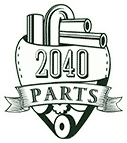Rear Shock Absorbers 1982-1993 Ford Mustang on 2040-parts.com
Fort Wayne, IN., US
Shocks & Struts for Sale
 Rear shock absorbers 60-65 corvair/greenbriar van(US $43.00)
Rear shock absorbers 60-65 corvair/greenbriar van(US $43.00) Rear shock absorbers 63-72 chevrolet truck(US $43.00)
Rear shock absorbers 63-72 chevrolet truck(US $43.00) Rear shocks/shock absorbers 59-60 buick(US $43.00)
Rear shocks/shock absorbers 59-60 buick(US $43.00) Rear shocks/shock absorbers 60-76 valient/duster(US $43.00)
Rear shocks/shock absorbers 60-76 valient/duster(US $43.00) Monroe suspension strut assembly(US $107.80)
Monroe suspension strut assembly(US $107.80) Rear shocks/shock absorbers 1967 firebird/transam(US $43.00)
Rear shocks/shock absorbers 1967 firebird/transam(US $43.00)
Once there were Singers, and Jowetts and Rileys, then came the Mini--from the AutoWeek archives
Thu, 27 Aug 2009Editor's note: As Mini celebrates its 50th birthday, it's the perfect time to revisit Kevin A. Wilson's insightful look at the fall of the British auto industry. This article was first published on March 8, 1993.
Next Generation Ford Focus – the Iosis MAX Concept – previews at Geneva
Tue, 03 Mar 2009Despite all its problems, Ford is on something of a roll. It already had a great set of products – seriously under-rated in many cases – and the recent additions of the Ford KA, The Ford Fiesta and the Ford Kuga has added even more credibility to its lineup. But Ford isn’t standing still, and has previewed the next generation Ford Focus – the Iosis MAX Concept – at the Geneva Motor Show 2009.
Essay: Variable Degrees of Translucency
Mon, 12 Nov 2007Car door panels and fenders are generally made of steel, sometimes of aluminum or plastic composites, and you can't see through them. Car windows, on the other hand, are made of a transparent sandwich of glass and plastic - and you can see through them. But in the future there will be variable degrees of transparency: translucent elements where once there were none, traditional window areas that will have opaque elements and graduated progressions from opaque to see-through.

